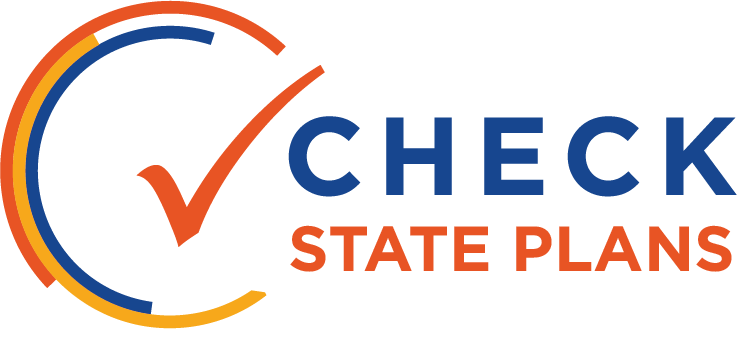
FLORIDA
- Overview of Florida's Plan
- Equity
- Strengths
- Improvements
- Coherent and Aligned Vision for Improving Outcomes
- Strategic Use of Funding and Alignment of Resources
- Rigorous Review Process
- Continuous Improvement, Monitoring and Evaluation
- Evidence-Based Interventions
- Capacity Building and Autonomy
- Engagement
- Sustainability
Promise to Practice Overview
Equity
Florida’s school improvement plan lacks an equity focus, and like its ESSA plan, does not consider subgroups, including English learners. In fact, the application appears to be only a pass-through mechanism for districts and schools to receive improvement funds, without a rigorous state review of the plan and proposed strategies within it.
Strengths
Florida bases its theory of action on the University of Chicago’s 5 Essentials for school improvement, which should help districts identify and address impediments to school success.
Improvements
Florida should align its school improvement materials to the state’s theory of action for school improvement and should incorporate the 5 Essentials. The state should also revise its accountability system to include student subgroups and English learner proficiency.
Coherent and Aligned Vision for Improving Outcomes:
Strategic Use of Funding and Alignment of Resources:
Rigorous Review Process:
Continuous Improvement, Monitoring and Evaluation:
Evidence-Based Interventions:
Capacity Building and Autonomy:
Engagement:
Sustainability:
Click through the tabs on the left to see how Florida scored in each category.
Equity
How well does the state’s approach to school improvement include focused attention on supporting underserved students and closing the achievement gap? Does the state require LEAs to maintain an equity focus in their school improvement plans, activities and resource allocations?
Florida has demonstrated a lack of commitment to closing achievement gaps by not addressing subgroup performance or English learner proficiency in the state’s accountability system. As a consequence, the state’s school improvement guidance and application do not ask districts and schools to consider equity-focused strategies for these and other historically disadvantaged students. In fact, the application appears to be only a pass-through mechanism for districts and schools to receive improvement funds, without a rigorous state review of the plan and proposed strategies within it.
Florida’s accountability system references the use of the lowest 25% performance supergroup, but does not address actual underperformance in student subgroups at all, even among targeted support schools, which is required by law, and therefore quarterly progress monitoring visits examine disaggregated data but do not disaggregate by any student characteristics. States should explicitly include equity as a goal of the school improvement process and be more specific about how they expect districts and schools to address the needs of subgroups of students when developing and implementing school improvement plans. States should also ensure that subgroup performance is considered for all indicators in their accountability systems and weighted appropriately to determine which schools are identified for improvement.
Strengths
How is the state thoughtfully leveraging ESSA’s flexibility to put in place the necessary policies and procedures that create an enabling environment for effective and sustained school improvement, and that consider state/local lessons learned from past efforts? What parts of the state’s turnaround strategy or guidance to LEAs were strongest or exemplary?
Florida’s use of the University of Chicago’s 5 Essentials to guide its theory of action is a solid approach. The 5 Essentials are research-based and can result in high standards for interventions in districts and schools. This program includes student survey administration, training and coaching for educators around the results, and an eye for school improvement beyond test scores. The 5 Essentials should help Florida districts identify and address problems related to school success.
Improvements
How can the state improve its turnaround efforts? What parts of the state’s strategy or guidance to LEAs were unclear? What risks and challenges might the state face with its current approach?
Florida should start by aligning its school improvement materials to the state’s theory of action for school improvement. Without drawing a clear thread from the theory of action through the entire process, it will be difficult to engage schools, districts, and communities in that process. The 5 Essentials should be incorporated into the state’s theory of action and receive buy-in from the community in order to be effective. The state should also revise its accountability system to include student subgroups and English learner proficiency.
Florida’s use of dual accountability system raises issues with school improvement implementation as it can cause confusion about which schools are being identified and how to prioritize efforts.
Coherent and Aligned Vision for Improving Outcomes
How well does the state articulate a coherent vision or theory of action that drives their school improvement efforts? Is this vision aligned with the state’s accountability system and goals for closing the achievement gap?

Florida’s Bureau of School Improvement, Bureau of Exceptional Education and Student Services, and the 5 Essentials all have separate theories of action. While any one theory of action would serve the purpose of defining the work, more than one creates confusion. It could be that one of these theories of action truly is the guide for the work, but because there is no thread drawn from the theory of action throughout the state’s school improvement materials, that is unknown.
While the 5 Essentials survey may be a valuable tool for schools to use as part of a system of supports for school improvement, it is not clear that Florida has piloted or evaluated the types of data and potential impacts from utilization of this data may have in their state. If this is the first use of this tool, it would be difficult to rely upon it to truly drive a vision for school improvement specific to the needs of the schools in the state. Florida’s exclusion of subgroup performance or English learner proficiency indicators in the state accountability system undermines its ability to address achievement gaps.
Strategic Use of Funding and Alignment of Resources
Is the state allocating funding in a way that is strategic and maximizes resources? Are LEAs expected to prioritize improvement efforts that address the underlying performance issues?

Florida awards funding on a per-pupil basis, which may be an adequate model, but the funding allotted does not appear to be enough to support any significant school improvement. The state appears to not be awarding funding based on need, which will almost certainly result in schools and districts with the furthest to go not receiving the necessary support. States utilizing formula grants may bear a slightly higher burden to help districts develop creative ways to allocate resources across programs to fulfill their goals. Without more clarity regarding the number of schools that will be designated, it is hard to know whether the resources available to struggling school will be sufficient.
Schools with graduation rates below 67% will receive such a small amount of funding – $50,000 at most – and it is hard to see how this will lead to improvement. While not all states are making the decision to provide additional funding to comprehensive schools identified for low graduation rates, and it is good that Florida has decided to do this, it is unclear what actual initiatives could be enacted or initiated with such a low amount of additional funding.
It was not apparent that there were additional supports beyond funding from the state to assist schools in school improvement. There also does not appear to be clear examples for recommended uses of funding. A recent state-hosted webinar included a list of non-allowable uses of funds as did the ESSA plan. However, this list seemed aimed at avoiding misuse of funds rather than prioritizing. The description in Florida’s ESSA plan of the state’s planning meetings, mentions that field teams will monitor the use of funds, but no details about this monitoring are included.
Rigorous Review Process
Is the state applying rigorous criteria and review processes to ensure resources will be used to support effective school improvement efforts? Is the state prioritizing funding to LEAs who demonstrate the greatest need for school improvement funding (including LEAs with a high percentage of CSI and TSI schools) and the strongest commitment to school improvement?

Florida seems to have a review process, but the documents available appear to be created during the ESEA waiver process and identify schools for Priority and Focus. It is unclear from the documents available if the state has revised its review process to incorporate or accommodate new flexibilities and responsibilities under ESSA. The review process does not appear to connect to the identified vision or funding model, and the planning tool seems to indicate a compliance mindset instead of a commitment to rigorous standards and review of school improvement efforts.
Continuous Improvement, Monitoring and Evaluation
Does the state have a robust, data-driven process to monitor LEAs’ implementation of the school improvement plans within their district? Did the state establish clear milestones to ensure improvement over time, and within four years?

Florida makes reference to continuous improvement and monitoring but provides little detail as to how this will occur. Much of this seems to be a district-only responsibility. Desktop monitoring by reviewing a sample of school plans and deliverables is mentioned, which seems inadequate, especially since the application contains no prompts for districts and schools to consider historical achievement data, set targets, or choose strategies based on their needs. It seems that the state is not concerned with districts and schools digging into their needs with a comprehensive needs assessment or thinking critically about the strategies to address those needs. The planning tool provided seems to be compliance-oriented and minimal. Florida’s ESSA plan mentions quarterly monitoring visits which seem also to be support visits. It may be difficult for these visits to successfully incorporate both monitoring and support at the same time. However, the activities of the quarterly monitoring visits are not described.
Evidence-Based Interventions
To what extent is the state mandating LEAs use evidence-based strategies in their improvement efforts? Does the state provide guidance and supports to LEAs to help them identify and implement the most effective strategies based upon their needs?

Aside from the use of “evidence-based” as an adjective to describe activities like interventions and strategies, none of Florida’s documents focus on evidence-based interventions. The state does not appear to require districts to link the strategies proposed with the evidence requirements within ESSA in their application, nor does the state provide guidance to their districts on the types of evidence based procedures they should use given the results of the needs assessment. Continuing from the review of their monitoring practices it is unclear that they plan to require or monitor the use of programs, let alone require that schools implement evidence-based programs and strategies.
Capacity Building and Autonomy
How well does the state articulate, delineate or set parameters around which interventions and responsibilities belong to the state, LEA and/or school? Does the state provide support or guidance to help LEAs identify and reduce barriers to school improvement? Does the state have a framework or process to support and monitor outside entities who partner with the state, LEAs or schools in school improvement efforts?

The details around Florida’s supports for districts and schools, such as the 5 Essentials and field visits, are minimal and do not show how they will help districts build capacity. It was unclear the extent to which the state is communicating with districts about the methods and strategies they can utilize to remove barriers to reform, including revamping or extending the school day, providing more supports for teachers. It was also unclear whether Florida is working with district leaders to support and monitor outside entities who partner with the district on their improvement outcomes. Florida also does not articulate the different roles of the state, district, and school in choosing, implementing, or sustaining interventions for school improvement over time.
Engagement
Does the state require LEAs to engage with stakeholders such as parents and community members in the development and implementation of their school improvement plans? Does the state provide sufficient guidance and resources to LEAs to effectively do so, helping them foster local buy-in and promote sustainability?

Florida does not mention engagement or collaboration with districts or schools in the development of their school improvement process. Given the inclusion of using the 5 Essentials survey, it should be necessary to have cultivated school and district buy-in. Additionally, there is nothing in the school improvement plan rubric that emphasizes or requires parent and community engagement in the development of school improvement plans.
Engagement
Does the state have a plan in place to review the school improvement efforts statewide and evaluate the impact and effectiveness? Does the state have a process in place to support LEAs and schools by enhancing their capacity to maintain their improvement efforts upon exiting identification and intervention?

Florida appears focused on compliance for school improvement. While the state identified its exit criteria, there is no process in place to helps schools maintain success once they exit improvement status. There are compliance routines in place for documentation of funding, but a lack of focus on building leadership or instructional capacity for ensuring new practices are successfully embedded into the school culture.
- Overview of Florida's Plan
- Goals
- Standards and Assessments
- Indicators
- Academic Progress
- All Students
- Identifying Schools
- Supporting Schools
- Exiting Improvement Status
- Continuous Improvement
 Overview
Overview
Strengths
- Florida has an overall clear, student-focused vision around high standards, college and career readiness, and rigorous accountability and improvement.
- It makes the case, fairly convincingly, and using historic data, that the approach it has taken to date is working and that it plans to stay the course.
- Florida also has a clearly defined and easy-to-understand A-F grading system, which places a strong emphasis on academic growth and accelerated coursework.
- The system identifies struggling schools to ensure stakeholders, schools, and students know how schools are serving their students each year and to guide differentiated school improvement strategies.
- Florida’s inclusion of science and social studies assessments is another strong element, as are the subsequent interventions for schools that do not exit improvement.
Weaknesses
- Florida’s approach to incorporating subgroups in its accountability system is a significant area for improvement and exposes some shortcomings of the state’s existing system.
- The state does not include individual subgroup data in its A-F grades, and only disaggregates its growth indicator by examining the lowest-performing quartile of students in a school.
- While Florida provides data demonstrating that the combined group over-represents students from traditionally-underserved subgroups, it is unclear if schools could receive high grades even if individual subgroups are performing poorly.
- The state focuses on overall school performance averages to identify schools. This approach is not only inconsistent with ESSA, but could also result in schools with low-performing subgroups failing to receive targeted support.
- Florida also has not incorporated an indicator of progress toward English language proficiency, as is required by ESSA, in its school identification process, and does not mention providing any accommodations or supports for its significant portion of students who are English learners.
Click through the tabs on the left to see how Florida scored in each category.
GOALS
Florida has a clear overall, student-focused vision around high standards, college and career readiness, and rigorous accountability and improvement.
It makes the case, fairly convincingly, and using historic data, that the approach it has taken to-date is working and that it plans to stay the course: The state’s goals under ESSA are clearly aligned to the State Board of Education’s strategic goals.
This alignment comes with pros and cons, however. Sending a coherent signal for expectations across the state is helpful for educators, district and school leaders, and the public, but it also means—in Florida’s case— that the “long-term” goals are more like “short-term” goals. The state uses the 2014-15 school year as a baseline, with an end date of the 2019-20 school year, when the Board will set its new five-year strategic goals.
Florida has included two different kinds of annual progress goals for achievement and graduation: one that examines increases overall, and another that examines reducing gaps between subgroups.
For the first goal, Florida expects to increase the percentage of all students scoring proficient in reading and in math by six points, and to increase four-year graduation rates by seven points.
For the second goal, Florida includes individual subgroups and aims to reduce the size of achievement and graduation gaps by one-third. While it is helpful that the plan includes data on previous student gains to validate the ambition of its goals, unfortunately, the state’s students are already behind on meeting them, and the plan does not describe any adjustments the state is making.
Florida has also set long-term goals for English learners making progress toward English language proficiency (ELP) by the 2019-20 school year. Florida’s goals aim to increase the percentage of students making sufficient gains by two points each year, from 60 to 66 percent. Florida’s approach to determine whether English learners are making gains may not recognize that English learners make progress toward ELP at varying rates, often based on their initial ELP level and other characteristics. In addition, full “credit” is given for maintaining English learners at level 4 on the ELP test, thus incentivizing less focus on higher-performing (but still not fully proficient) English learners. Florida could strengthen its plan by adding information demonstrating that this is a valid approach to measure progress and that these goals are ambitious and aligned with the state’s expectation for students to exit English learner services within no more than five years.
STANDARDS AND ASSESSMENTS

Florida adopted and recently revised their college- and career-ready standards and plans to take advantage of ESSA’s flexibility when it comes to assessment requirements.
Florida has updated its academic standards and aligned assessments twice since 2011. Its most recent revisions, completed in 2015, were intended to ensure the standards were aligned to college- and career-ready expectations and introduced the Florida Standards Assessments (FSA). Florida could strengthen its plan further by providing more information about the process used to update the standards and assessments.
Florida provides multiple end-of-course tests in high schools, and the state encourages students to take the classes associated with these tests in middle school. Florida could strengthen its plan by describing the steps it is taking to ensure underserved students have equitable access to rigorous instruction that will prepare them to take these courses in middle school. Further, Florida is proposing to expand this flexibility beyond eighth grade math to all subjects and all grade levels, as state law requires middle school students in these classes to only take the end-of-course test. The state should also more clearly articulate which tests students will take if they take some, or all, of the state’s high school assessments early.
Florida will only provide assessment instructions in English, and does not explain how the state plans to support or accommodate English Learners taking those assessments.
Florida indicates there are no languages spoken by English learners present to a significant extent, despite its large Spanish-speaking population. Due to state law, Florida will only provide assessments in English, and the plan does not discuss any supports or accommodations provided to English learners to assist them in taking English-language assessments.
Florida could strengthen its plan by providing more information about its alternate achievement standards and aligned assessments for students with the most severe cognitive disabilities.
The state could include the steps it will take to ensure that the state does not exceed the one percent cap on participation in the alternate assessment for students with the most significant cognitive disabilities.
INDICATORS
Florida’s plan provides a simple list of indicators that have been used in its longstanding A-F grading system.
Some of these indicators are quite strong, such as its inclusion of science and social studies, signaling the critical importance of college and career readiness and a well-rounded education. And all of the indicators are oriented toward students’ academic achievement or growth.
The indicators’ strengths are undermined by notable and worrisome exclusions in Florida’s plan.
Specifically, Florida does not include an indicator measuring progress toward English language proficiency (ELP), as required by ESSA. By not including ELP as an academic indicator, the state has excluded this critical measure from “counting” in its accountability system, thus providing schools with few incentives to focus specifically on English learners. Although Florida set a goal for English learner progress, missing this goal carries no consequences.
The indicators Florida does include are relatively straightforward. And their “acceleration” metric deserves particular recognition.
Besides achievement in reading and math and on-time graduation rates, the state’s school grades are based on achievement in science for all grade spans and in social studies for middle and high schools; learning gains for all students and the lowest-performing students in all grade spans; and measures of college and career readiness, or “acceleration,” in middle and high schools.
In middle school, the “acceleration” metric deserves credit for measuring the percentage of students passing one of Florida’s high school tests or receiving an industry certification, encouraging middle schools to increase the number of students prepared for success in high school. Similarly, the high school acceleration metric promotes preparedness for higher education and the workforce by measuring the percentage of graduates who are eligible for college credit on AP, IB, or Advanced International Certification of Education (AICE) exams; that earned college credits via dual enrollment; or that earned nationally recognized industry certifications.
ACADEMIC PROGRESS
Florida’s plan pairs grade-level expectations with a growth indicator as a measure of student progress, and places an added emphasis on struggling students.
Florida deserves credit for pairing a clear indicator of student achievement against grade-level expectations (the percentage of students proficient in English language arts and math) with a growth indicator that measures student progress, with additional emphasis on struggling students.
Florida measures learning gains in high school, as well as in the earlier grades, and allows students to demonstrate progress in one of four ways that, when taken together, incentivize educators to pay attention to every student. Students are considered as having made academic progress if they: (1) maintain a score in the top achievement level, level 5; (2) improve by one or more achievement levels; (3) maintain a passing achievement level (3 or 4) and increase their score by at least one point; or (4) for students who remain in level 1 or 2, increase their score to a higher subcategory within the performance level.
That said, it is not clear if the measure is as rigorous for students who are already proficient as a one-point scale score increase appears to be a much smaller gain than moving up an entire performance level. Florida’s plan could be strengthened by providing evidence validating that all of these criteria represent adequate growth.
Florida places significant weight on measuring learning gains, giving them twice as much weight in the school grades calculation relative to proficiency in English language arts and math.
The reason growth receives such significant emphasis is that it is measured not only for all students, but also for the lowest-performing quartile of students, creating strong incentives for educators and school leaders to focus on moving these students toward grade-level expectations. Some peers, however, felt that Florida overemphasized growth in its A-F grades as a result, relative to achievement.
ALL STUDENTS
Florida’s exclusion of individual subgroup data in A-F school and district grades is concerning.
While the state will include subgroup data on report cards, Florida does not incorporate individual subgroup performance into its A-F school and district grades. Instead, the state measures growth for the bottom quartile of students, which may help capture some of these students. Florida includes some data showing that schools with low grades have lower subgroup performance, on average. That said, the exclusion of individual subgroup data in A-F grades is still concerning.
Florida uses its A-F grades rather than individual subgroup data to identify schools for targeted support.
This approach does not ensure schools with consistently underperforming subgroups are identified. Simply reporting on subgroups is inadequate to ensure that all subgroups of students receive a high-quality education and that schools struggling to support them receive the help and attention they need.
Florida’s choice of 10 students as the minimum number (i.e., n-size) needed to include disaggregated data in its system is strong.
The state indicates that this is one reason to use the bottom quartile of students as its only subgroup for accountability, as nearly all schools are likely to have at least 10 students in their bottom quartile, even if they do not have 10 students in many individual groups. This is undoubtedly true, but Florida could use its lowest-performing quartile subgroup in addition to individual subgroup performance, rather than, increasing subgroup accountability..
The state proposes to include former English learners as part of the subgroup for accountability purposes, but does not indicate how long they will be included.
In addition to failing to meaningfully include English learners in their accountability system, the state proposes to include former English learners as part of the subgroup for accountability purposes, but does not indicate how long they will be included. Since exiting students tend to have higher performance, the state should clarify the length of time they will be part of the subgroup and monitor its data to ensure their inclusion is not masking the performance of English learners still receiving services.
When it comes to annual testing, Florida’s plan for holding schools accountable is problematic and goes against ESSA requirements.
Florida’s policy for holding schools accountable if they do not meet a 95 percent participation rate in annual testing is problematic. While these schools initially receive an “Incomplete” grade, districts may submit data to the state Commissioner that determines whether the grade would have changed if 95 percent of students participated. ESSA requires all schools to include at least 95 percent of enrolled students in its achievement indicator, meaning that some non-tested students must be counted as non-proficient. Yet Florida’s plan explicitly states it will not do so. Florida could create stronger incentives for schools to ensure all students are included, such as lowering schools a letter grade, or docking the number of points the school receives in the achievement indicator.
![]()
IDENTIFYING SCHOOLS
Florida’s accountability system produces a single, straightforward A-F grade for schools and districts—which is likely helpful to parents and educators—but doesn’t ensure that struggling subgroups of students will be identified.
Florida’s A-F grades are primarily based on student achievement and progress. However, the state then uses this grade to make its determinations for schools with consistently underperforming subgroups, but this method will identify schools with low overall performance rather than low-performing subgroups of students.
Florida identifies for targeted support any school awarded a D grade (after receiving a C grade or better in the previous year). While the plan includes data showing that subgroup performance in D schools is generally lower than in A, B, and C schools, it does not include data on how many schools will be flagged for targeted support or ensure that any school with a struggling subgroup will be identified. It is likely that some schools with A, B, or C grades could still have at least one subgroup, like students with disabilities, English learners, or Black students, that is very low-performing, because the performance of each individual group is not considered in A-F grades.
In addition, Florida does not identify schools for additional targeted support – schools where a subgroup is performing similarly to schools among the bottom five percent in the state. Florida’s plan would be strengthened by ensuring that schools with a single struggling group are identified for targeted support, regardless of school grade, and by including policies to ensure additional targeted support schools are also identified.
Florida identifies for comprehensive support any school that receives an F grade in a single year, or a D grade for two consecutive years.
This is a strong policy that sends a clear signal about the level of performance that is unacceptable in Florida schools. The state also provides data showing that this includes 6.5 percent of Title I schools, or 132 schools. In addition, any high school with a four-year graduation rate below 67 percent will be placed in comprehensive support. Schools can be identified annually, beginning in 2018-19.
SUPPORTING SCHOOLS
Florida’s plan describes a multi-tiered system of supports for schools to help improve student outcomes.
Differentiating support in this type of system can help to ensure assistance is appropriate to a school’s needs, but Florida’s plan could be strengthened by including much more detail on the specific strategies that will be employed and how these supports will promote the use of evidence-based interventions with demonstrated records of improving student outcomes. For example, the supports provided at Tiers 1 (the least intensive) and 2 mainly involve feedback and assistance in creating school improvement plans or a turnaround options plan by state teams embedded across four regions, without articulating what strategies will be implemented.
Florida’s Tier 3 interventions are much more rigorous and meant for schools in comprehensive support that have not improved. Unless one additional year is granted because the school is deemed likely to improve by the state, comprehensive support schools that do not improve to a C grade after two years must either close, or turn over their operation from the district to a charter or external operator with a demonstrated record of effectiveness. Florida’s plan could be improved with additional information on the effectiveness and process for implementing Tier 3 interventions.
Florida has missed an opportunity to articulate a plan for how it will be using the 7 percent of its Title I dollars that are intended for school improvement activities.
While the plan describes how the state will allocate its own staff time to districts with low-performing schools, it does not describe how fiscal resources will be allocated, nor how the state will encourage more equitable distribution of federal, state, and local resources. Further, the state should indicate if and how it intends to provide direct student services using the optional 3 percent Title I set-aside.
EXITING IMPROVEMENT STATUS
Florida’s exit criteria for identified schools are generally clear and require improved student outcomes.
The state’s exit criteria set a high overall bar for both comprehensive and targeted support schools to improve to at least a C grade to be removed from improvement. Comprehensive support schools are expected to see this progress after two years of implementation, while targeted support schools only have one year (as a second D grade will result in their identification for comprehensive support). However, for targeted support schools, it is unclear whether a D school could improve its grade without actually improving the performance of individual subgroups, as the school grades do not take into account individual subgroup data.
The plan is not clear whether these criteria promote sustained improvement over time.
Florida provides data indicating this level of progress is possible in a single year, but it is less clear whether these criteria promote sustained improvement over time.
Florida should monitor whether gains are sustained and subgroup performance is improving, as school grades are not based on subgroup performance.
In addition, Florida’s plan does not include exit criteria for high schools identified due to low graduation rates.
CONTINUOUS IMPROVEMENT
Florida has processes in place for continually refining and improving its system.
The school rating system’s pervasive use, the strong consequences for schools that do not improve quickly, and the support teams dispatched to districts with failing schools, all speak to the state’s commitment to improvement. Florida’s history of modifying and enhancing its accountability plan is also encouraging. For example, the State Board will develop a new strategic plan after the 2019-20 school year, which will reset the state’s goals based on more recent data.
The plan could be strengthened, however, by providing additional detail regarding how stakeholders will be involved in these decisions and how their feedback will be considered.
Florida has a plan in place to use data as a tool to support continuous improvement among districts.
Florida plans to use its EDStats portal to provide clear, actionable data to parents and the public and to support identification of districts that need additional support. As all districts can access Tier 1 supports (see “Supporting Schools” tab), this is one way to help schools where students are struggling or where large gaps exist.
Florida also employs an early warning system to help support students, particularly in middle and high schools, who are at-risk of not graduating on-time. The system helps school districts flag patterns associated with dropout or graduation delay and take action by deploying intervention strategies.





